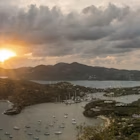

Les Trois Îlets combines gorgeous Caribbean beaches with French charm. Getty Images
Mix French charm with West Indian joie de vivre, and you get Martinique, a delightful island in the Lesser Antilles.
Here, rugged volcanic landscapes give way to lush rainforests, soaring peaks and postcard-perfect beaches, with the towering Mont Pelée volcano as a powerful symbol of nature’s might.
From sipping a ti’ punch to diving into Fort-de-France’s bustling markets, first-time visitors will be met with an island steeped in a rich mélange of African, French and West Indian culture, layered history and limitless adventure.
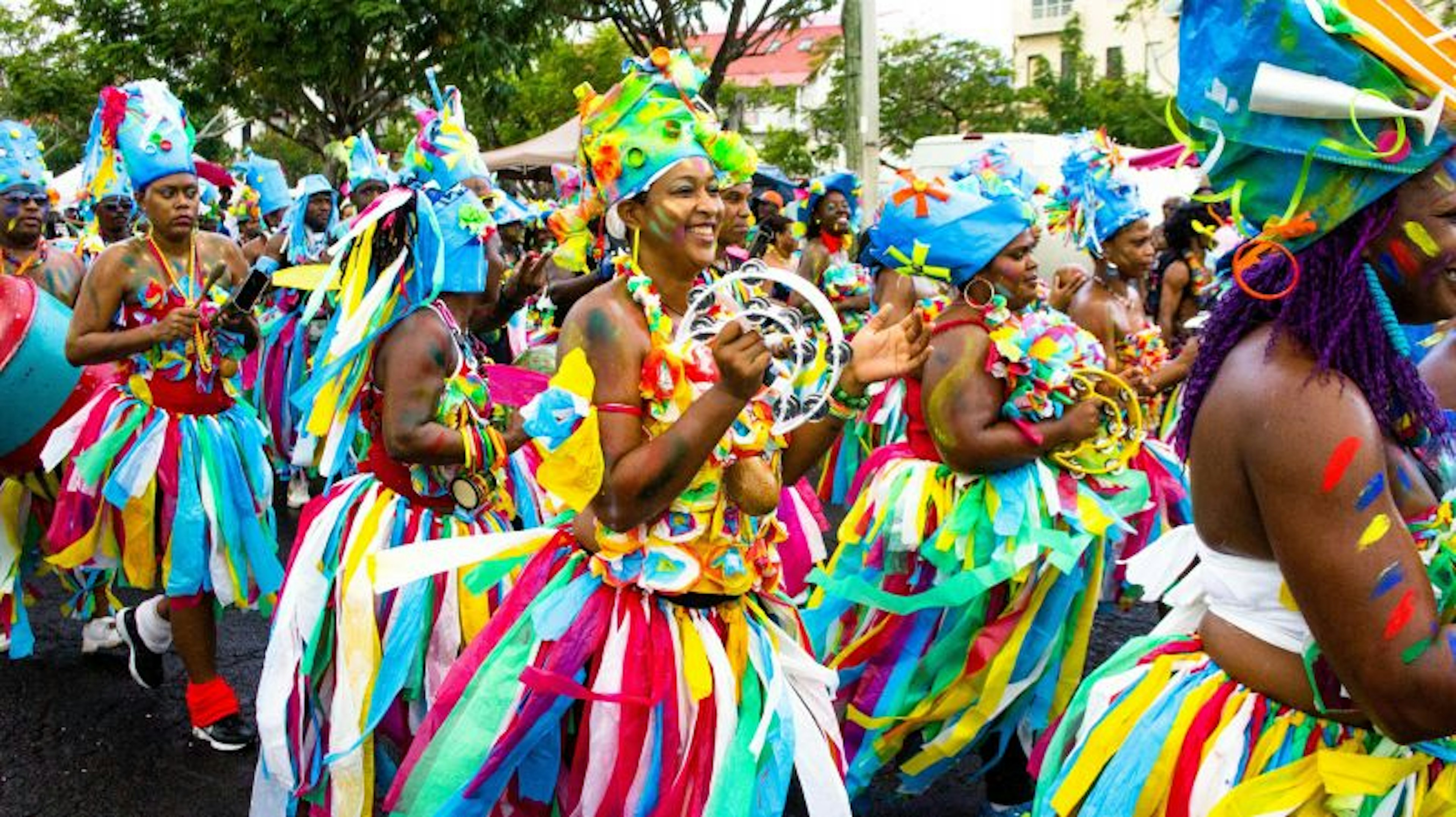
When should I go to Martinique?
The beauty of travel to the Caribbean is that you can go at almost any time of year.
Martinique’s dry season runs from December to about mid-April, bringing warm, sunny weather and calm waters ideal for swimming and snorkeling.
These pleasant conditions coincide with peak season, so you’ll find many other visitors seeking to escape colder climates – and driving up hotel prices accordingly.
The wet season starts in June and lasts until November. During this period, there’s a higher likelihood of occasional showers, but you’ll reap better rates and availability as fewer tourists arrive. It’s also the best time to visit Martinique’s botanical gardens, as they’re extra-lush, with intense pops of green and flowers in full bloom.
Traveling from mid-February to early March? You’re in for a treat. Martinique hosts a traditional carnival that departs from the famously sequined revelry of Rio de Janeiro or Trinidad & Tobago.
Martinique’s “vaval” is infused with a spirit of resistance that dates to the festival’s earliest days. Traditions include the nèg gwo siwo, in which participants represent escaped slaves by covering themselves in molasses and charcoal; the Samedi Gras carnival-queens parade; clay men; the grotesque red devils; and – my personal favorite – the vidé pyjama, essentially J’ouvert in sleepwear.
How much time should I spend in Martinique?
Martinique caters to both thrill seekers as for those craving a tranquil and relaxed getaway. While you could reasonably get a satisfying taste of the island’s magic in three to four days, plan on at least a week-long stay for unhurried exploration.
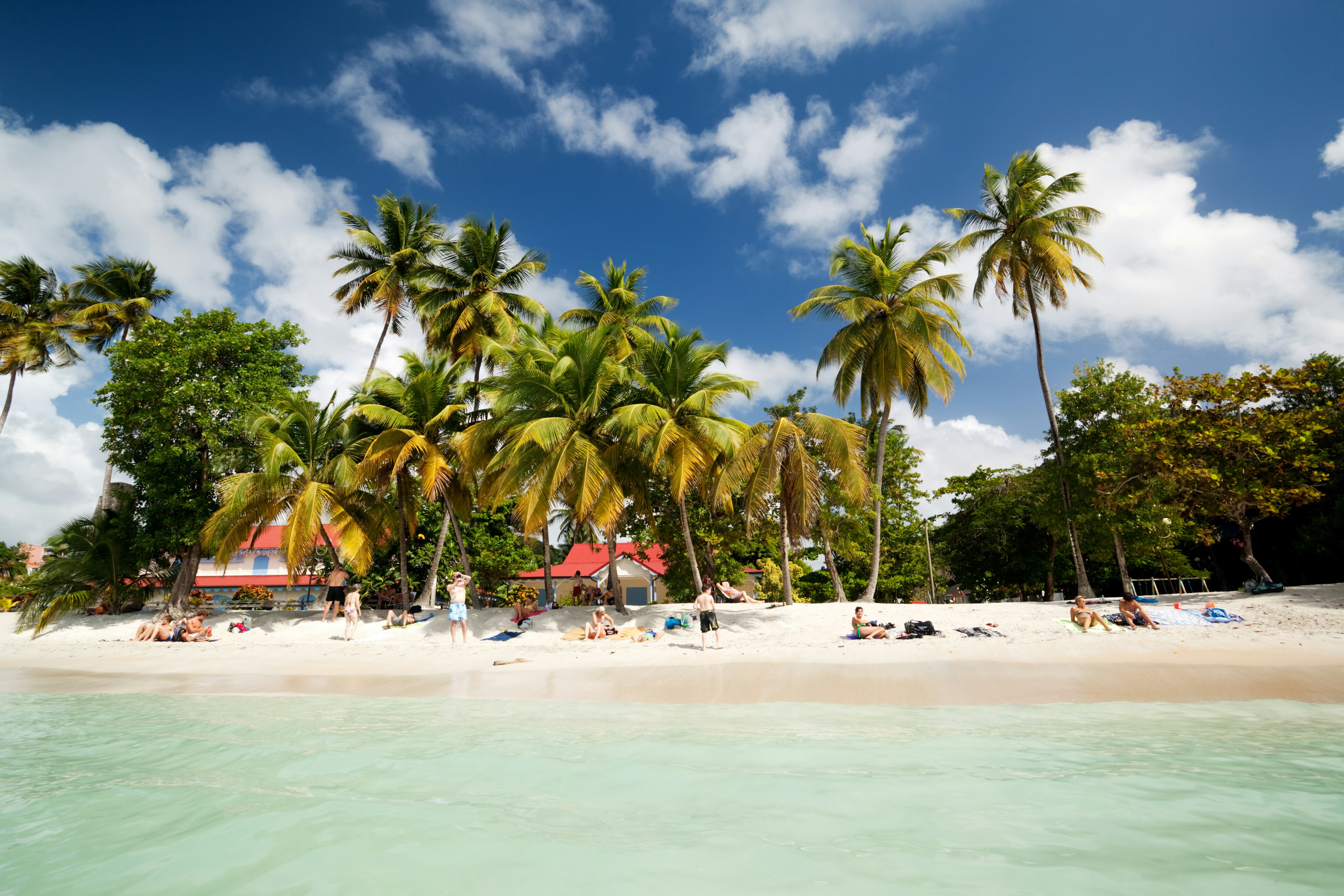
Is it easy to get in and around the destination?
Visitors flying in from France, Montréal or Miami will enjoy direct service into Martinique Aimé Césaire International Airport. The airport is only 15 minutes from the capital, and a 40-minute drive from Les Trois-Îlets, a popular beach town.
Alternatively, the Express des Îles operates a ferry service to the island several times a week from neighboring Dominica, Guadeloupe and St Lucia.
Martinique’s Transport en Commun en Site Propre (TCSP) is a modern bus service that serves the Fort-de-France and Le Lamentin areas. Other large buses (or grands busses) connect the island – but locals rely mostly on minivans marked “TC” (taxi collectif), with destinations displayed in the front window.
In Fort-de-France, the main bus depot is at Pointe Simon, near the harbor, with other stops marked by blue “arrêt autobus” signs. There are no fixed schedules; buses typically depart when full. Fares start at €1.50.
Service is limited on Sundays and late at night, at which times you should consider hiring a taxi. This is a much pricier option – expect to pay anywhere from €30 to €70, depending on your destination, plus a 40% surcharge on fares between 8pm and 6am.
While renting a car is the most convenient option, drivers must meet certain age and license requirements. For example, Sixt requires drivers to be 21 years old and have a valid license that has been in effect for at least one year.
Ferries called vedettes depart from Fort-de-France’s Rue de la Liberté and go to the resort towns of Les Trois-Îlets, Pointe du Bout, Anse Mitan and Anse à l’Ane. Prices begin at €7, and the trips typically take 20 to 30 minutes.
Many roadways lack sidewalks or footpaths, so be cautious of approaching traffic if you choose to walk.
Top things to do in Martinique
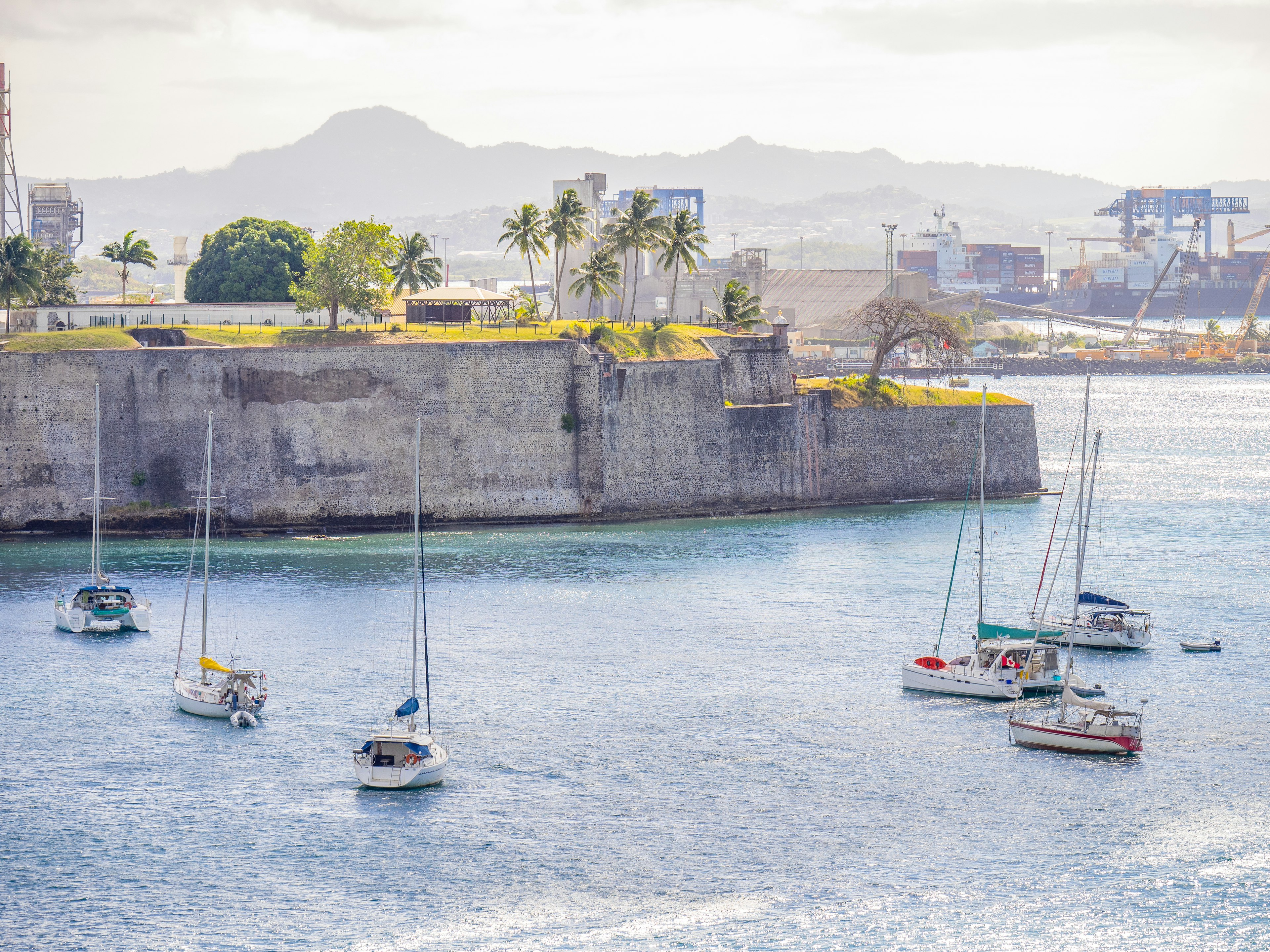
Visit Fort-St-Louis for a history lesson and stellar views
Fort-St-Louis pulls double duty as an iconic landmark for history buffs and a can’t-miss attraction for first-timers. Built in 1640, this coastal stronghold has been an important part of Martinique’s narrative ever since.
Although much of the original structure has changed, the fort still commands a striking presence in the city’s center, just a short walk from La Savane and the ferry terminal.
The rooftop views of the city and harbor are unbeatable – and the story of the Vauban-style fortress, related during a guided tour, is fascinating.
It’s still an active French naval base, so only certain areas are open to visitors, and photos of military personnel are prohibited.

Sip on some sweet rum
Martinique’s signature rhum agricole is made from fresh sugarcane juice rather than molasses, setting it apart from other varieties of rum. As one of the world’s premier sugarcane-growing regions, the island holds a prestigious AOC designation.
Established in 1842 and one of just two remaining family-run distilleries in Martinique, Distillerie La Favorite is known for producing some of the island’s finest white rhum, characterized by its natural sweetness and citrusy notes.
In Le François, L’Habitation Clément is a former distillery–turned–museum where you can see firsthand how sugarcane becomes the famous rhum agricole. For a more intimate experience, visit Distillerie Depaz, perched at the base of Mont Pelée on the island’s northwest coast.
Find your slice of paradise
Les Anses d’Arlet is one of Martinique’s most photogenic spots, with a picturesque pier that connects Église St-Henri to the bay. The town’s laid-back vibe and serene beaches make it perfect for a day of swimming, snorkeling and sunbathing.
Anse Noire’s volcanic black sand contrasts beautifully with the turquoise waters, while nearby Anse Dufour boasts golden sands and abundant sea turtles.
Plage du Diamant, Martinique’s largest beach, reveals incomparable views of the rocky island of Rocher du Diamant, while Petite Anse remains peaceful and secluded. Grande Anse des Salines, with its white sand and calm waters, is perfect for families and a must-visit for beach lovers.
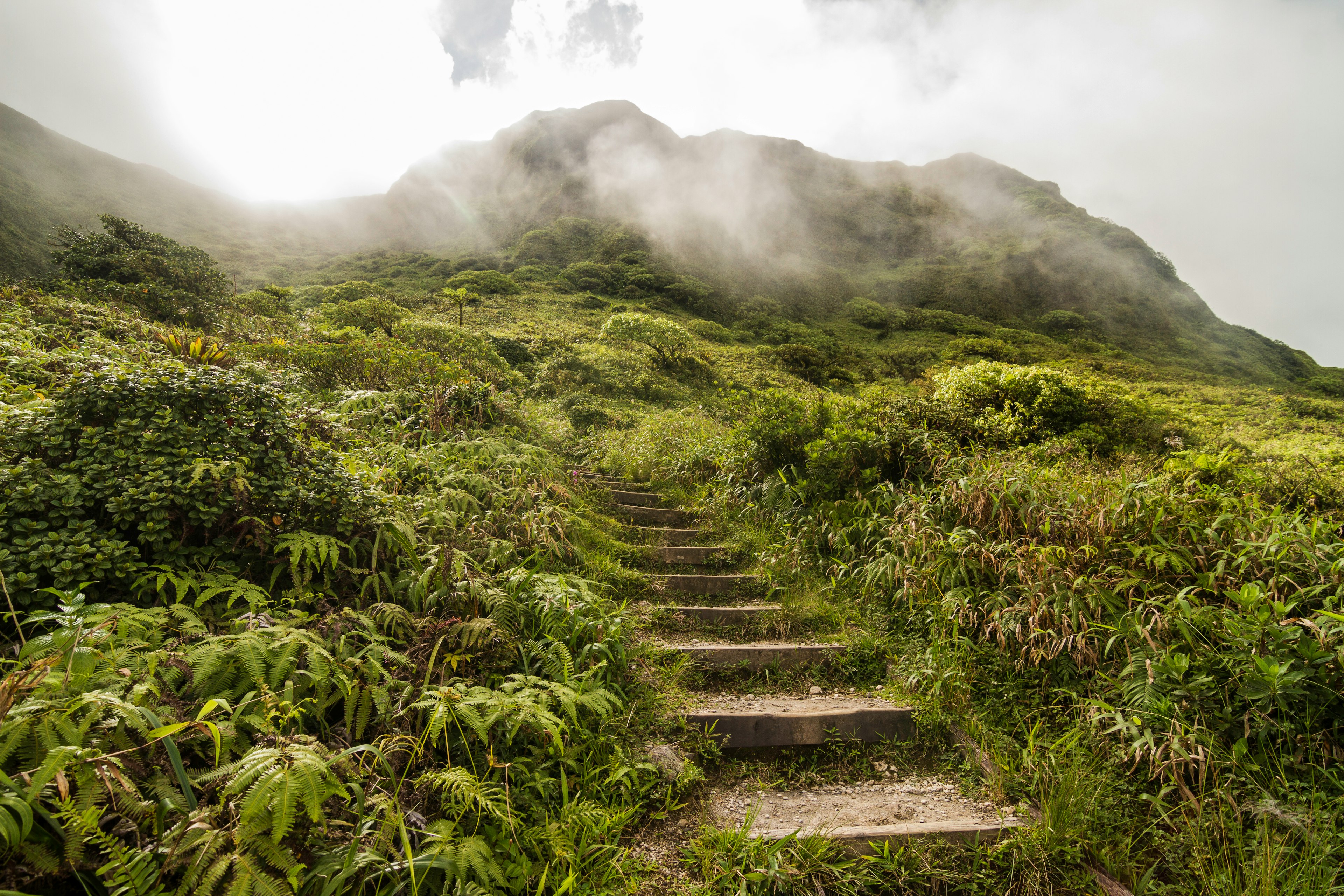
Hike the trails of Mont Pelée
Mont Pelée dramatically shaped Martinique’s landscape when it erupted in 1902, wiping out the town of St-Pierre. Today, the active volcano entices nature lovers with its scenic hiking trails and exquisite panoramas.
The popular L’Aileron trail is a 4-hour round-trip hike, while the Grande Savane offers a 2-hour moderate trek along ridgelines with views of St-Pierre. Beginning in Désiles, the Morne Macouba trail takes you through a tropical rainforest with vistas of the Macouba Valley.
Morning hikes provide the best views before clouds settle in. Be sure to bring water, rain gear and layers for cooler temperatures and occasional rain.
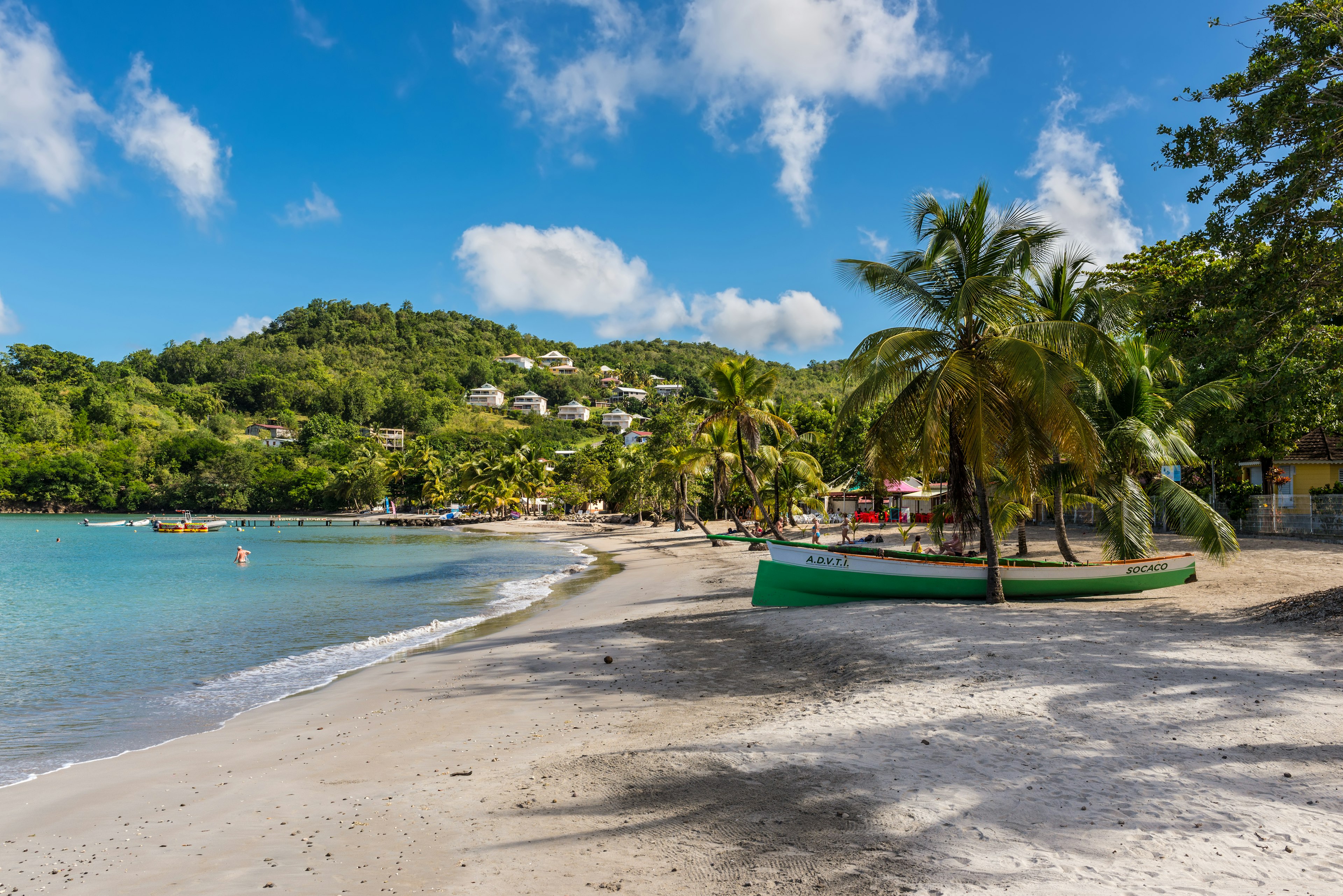
My favorite thing to do in Martinique
As a St Lucian, I have a deep affection for my neighbors in Martinique. On clear days, the island is visible from Pigeon Island, and it’s only an hour away by ferry.
I adore Les Trois-Îlets, where bone-white sand meets impossibly turquoise waters. Just steps away, you’ll discover quaint wine bars and restaurants that evoke the essence of Frenchness. While it may seem touristy, there’s an indescribable charm that captivates me. Perhaps you might call it a je ne sais quoi.
How much money do I need for Martinique?
Since Martinique is part of France, the euro is the official currency. While some businesses take US dollars, visitors should always have euro bills with them.
Nightly accommodation: €50–180
Restaurant meal for two: €25–120
Public transportation: €1.50–10
Private taxi service: €30–90
Glass of ti’ punch: €2–8
Cup of coffee or tea: €3–7
Explore related stories

Beaches
Copy My Trip: a winter break filled with swimming, hiking and dancing in GuadeloupeDec 11, 2023 • 5 min read





 Art and CultureFrance itineraries: 5 routes to see the best of the country
Art and CultureFrance itineraries: 5 routes to see the best of the countryOct 24, 2024 • 13 min read

